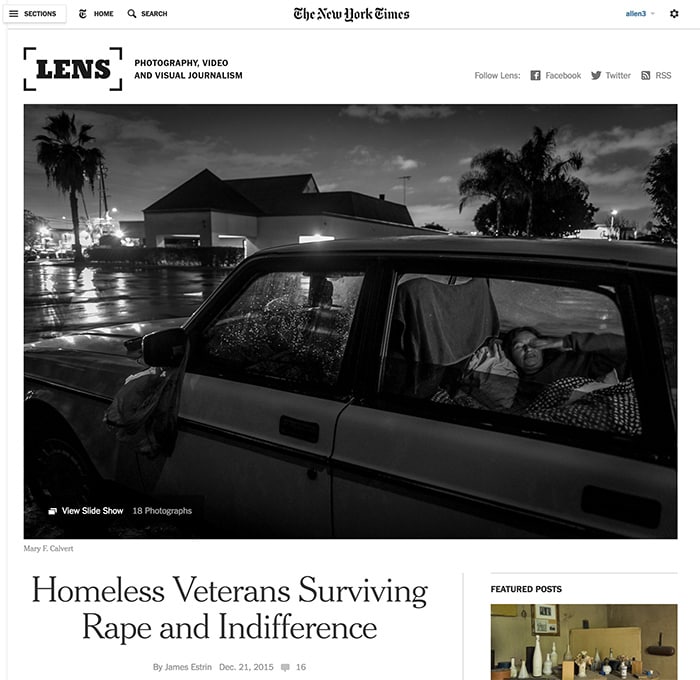Share
The Slideshow is a Terrible Way to Show Photos
Last week, I sat near the stage’s edge in the Paramount Theater to witness the ever-inspiring Look3 Festival in Charlottesville, VA. Hearing the...

Last week, I sat near the stage’s edge in the Paramount Theater to witness the ever-inspiring Look3 Festival in Charlottesville, VA. Hearing the presentations reminded me of the passion and conviction of the photographers who have dedicated years of their lives to specific projects. Having seen much of the work beforehand in exhibits and in online slideshows, I was struck at the inadequacy of those static presentation forms in audience engagement.
Let me give you two examples.
Joe Riis studied wildlife biology in college, but soon discovered a passion for photography that he put to use in documenting the migration paths of animals near Yellowstone National Park. His photos are incredible as they are beautiful, but it’s too easy to glance at a photo and think nothing more of it. Seeing a few pictures and reading about pronghorn migration patterns isn’t the same as Riis explaining how little we knew about their bi-annual journey, and the troubles he went through to capture a single image. He’s also unexpectedly funny without the usual trappings of showmanship.
Similarly, you might have seen Mary F. Calvert’s work on sexual assault in the military, but you might not know that the project started as a result of her losing her job at the Washington Times and a suggestion by her husband to look into the topic. Hearing the backstory behind the portraits and her passion to give these men and women a voice creates a level of gravitas that might otherwise not exist when simply viewing a slideshow on the Lens blog.
Both photographers have covered their topics for years. Both claim that the work will continue indefinitely. Both have personal interests in the causes that they have dedicated their professional lives to document.
The slideshow – that ubiquitous medium for showing a collection of images – does a piss poor job of revealing much beyond the frame. Providing a caption or audio narration helps, but getting a wider audience to interact at that level is rare. And even rarer is enticing the audience to a “call-to-action.”
This matters because our consumption of images has changed drastically since the creation of the internet and the advent of photography. In the early days of the Internet, we would eagerly anticipate the latest MSNBC Pictures of the Week. Now professional photographers continuously battle for mindshare alongside viral memes, the latest photos of Justin Bieber’s haircut, and the growing influence of Instagram and Snapchat. To make matters more challenging, we’re confronted with the ubiquity of video combined with a decreased interest in reading.
Thus the way we present images has to evolve.
As I’ve written before, a number of media companies have been experimenting with different presentation formats.The New York Times’ most recent foray combined video, audio, stills and overlaid captions in a piece on Syria.
Having a novel format might increase engagement, but that depends on people clicking to where the content resides in the first place. And therein lies the contemporary problem.
A slideshow is like a movie without a preview. You’re expected to be immediately immersed without understanding anything about it. Pictures increasingly do not stand on their own. Rare is the picture so unusual, so shocking that it will stop people in their tracks. Today is about storytelling, and photographers have to to use cinematic storytelling to gain their audience’s interest.
You might have seen the following piece floating around Facebook recently about Platon’s New Yorker photo.
It combines all the elements to make it successful: video, clickbait title, and a contemporary storytelling style – all to showcase a photo. Now imagine this format as a “preview” for Calvert’s sexual assault in the military story. Can you see the content going viral? Would 1 million views change the trajectory of the issue? It very well might.
It’s easy to be confounded by the rapid changes in the industry, but there are templates for success. Publishing a low resolution slideshow isn’t one of them. The slideshow is dead! Long live the slideshow (with a few modifications).




